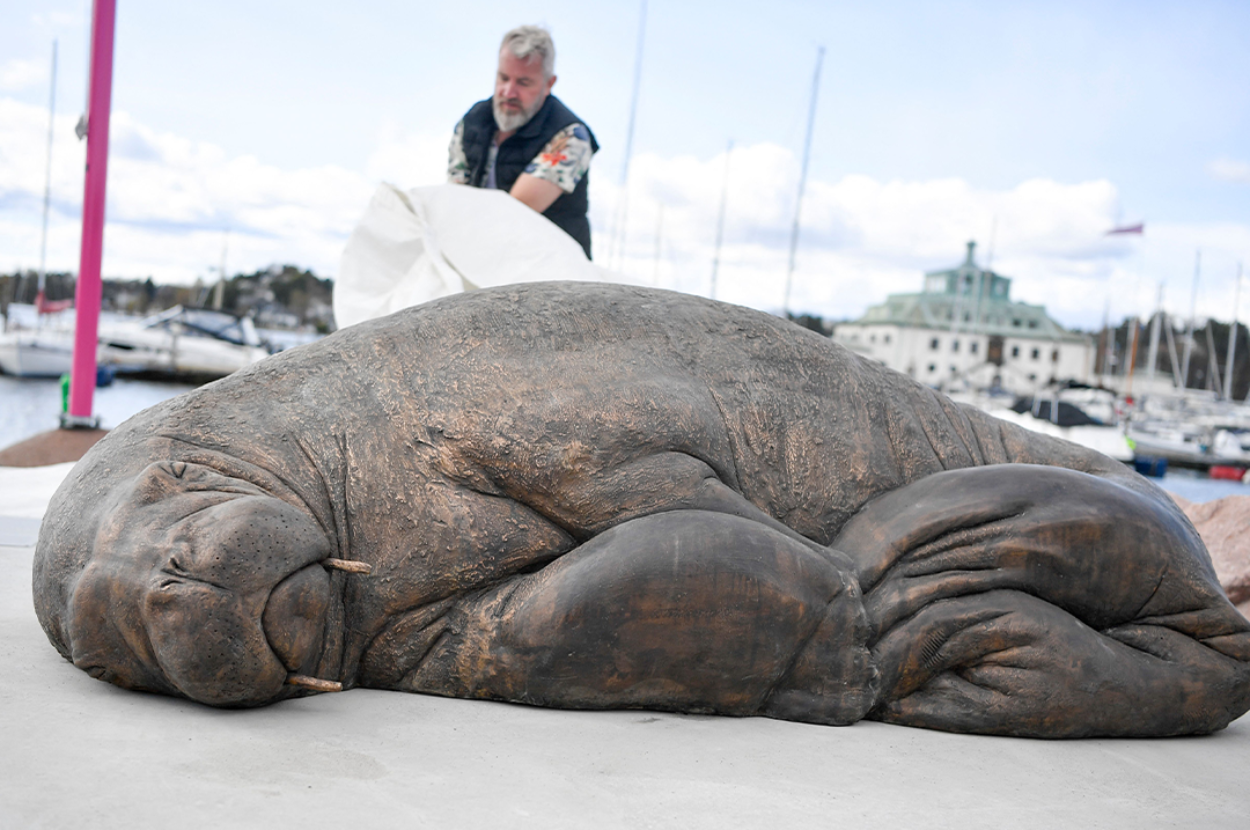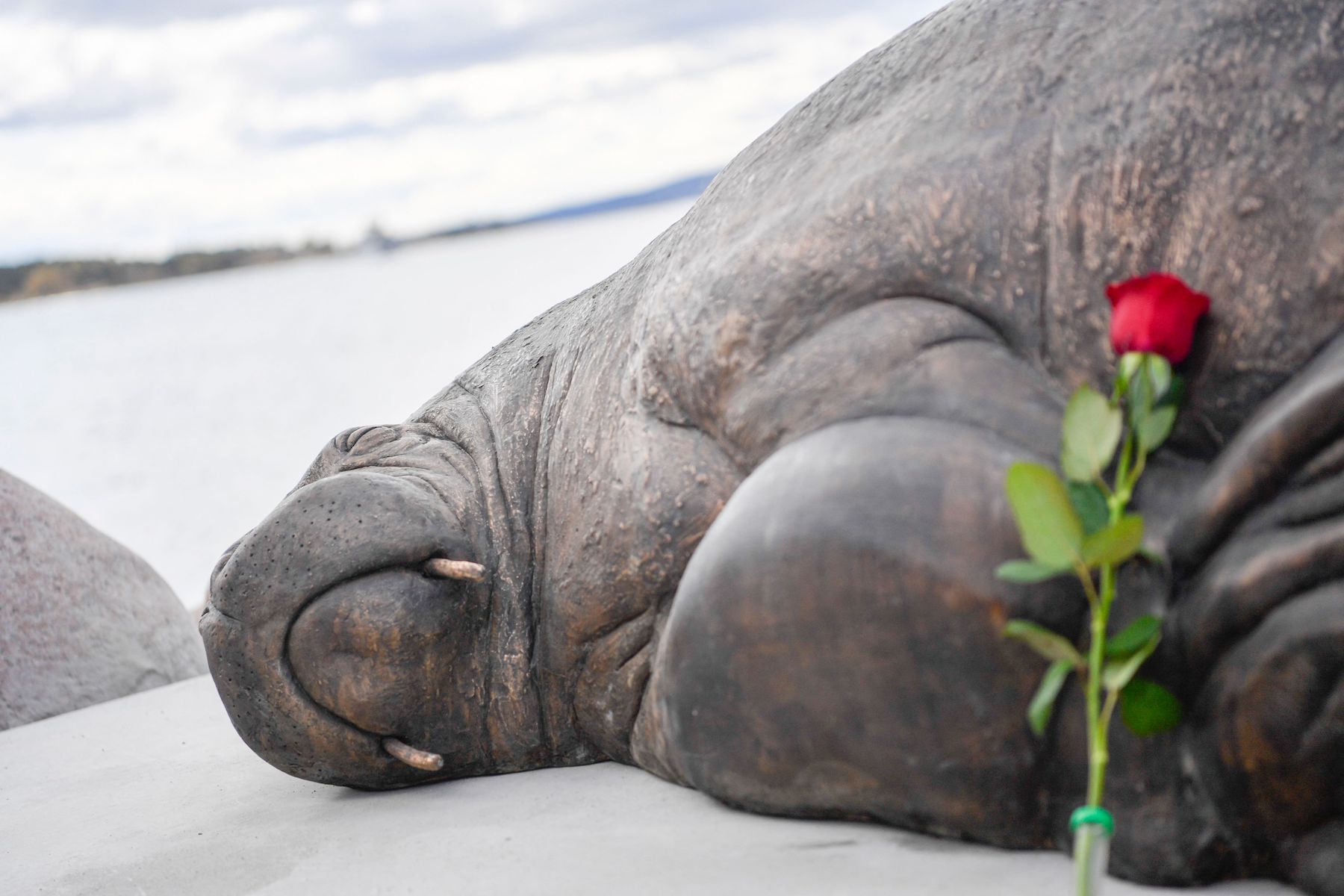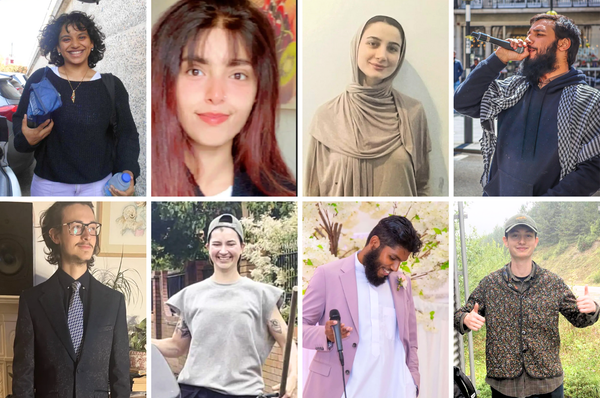This Norwegian Artist Has Created A Statue Of Freya The Walrus After She Was Killed
The bronze statue was unveiled on Saturday April 29 in Oslo’s Kongen marina, close to where Freya had basked over summer.

A Norwegian artist has created a life-size statue of Freya the walrus after she was killed by authorities because people wouldn’t stay away from her.
Freya had become a social media celebrity in the summer of 2022 when she toured the shores of Norway, lying around and sinking boats.
Authorities had warned the public that they would take further action and euthanize Freya if people continued to stress her out and disregard safety measures.

However, a few days later, Norway’s Directorate of General Fisheries put down the 700-kilogram walrus during the early hours of Aug. 14, 2022, for “becoming a threat to human safety.”
“The decision to euthanize the walrus was made based on an overall assessment of the continued threat to human safety,” the director general of fisheries, Frank Bakke-Jensen, said in a statement.
“I am firm that this was the right call. We have great regard for animal welfare, but human life and safety must take precedence,” Bakke-Jensen said in the statement.
According to authorities, they had considered other options such as moving her to another location, but it was “not a viable option” considering the risk she would pose to other animals.
Freya – nicknamed after the Norse goddess of love and beauty – had gained local and international attention after videos and images of her lounging around unbothered on boats and by the harbor in Stabbestad went viral, with one tweet gaining more than 14,000 retweets.
The decision sparked massive backlash, with many calling it completely unnecessary.
A man named Erik Holm then launched an online campaign to build a statue of Freya, raising more than US$25,000.
“I started this because I’m furious about the way the [Norwegian] Fisheries Directorate and the state handled this situation,” Holm told AFP.
The bronze statue was unveiled on Saturday April 29 in Oslo’s Kongen marina, close to where Freya had basked over summer.

“This is how humans treat wild nature, but it is also how humans treat humans. This is how we treated Freya. And so, I will call the statue For Our Sins,” the artist, Astri Tonoian, said, according to the BBC.
A Norwegian biologist at the University of South-Eastern Norway, Rune Aae, who had followed Freya’s whereabouts and even help create a Facebook group to inform the public, called the decision “too hasty a conclusion”.
“Freya had sooner or later gotten out of the Oslo Fjord, which all previous experience has shown, so killing her was, in my view, completely unnecessary, and another example of a trigger-happy gun management – for which Norway is already well known,” Rune Aae said in a Facebook statement.
“We found out about Freya being killed from the news,” Per Ole Halvorsen, a 59-year-old retired firefighter and semi-professional photographer from the town of Kragerø, who had previously photographed Freya told Almost.
“I was saddened by the news. Sadly not surprised – but saddened,” he said. “A very unnecessary decision to have her killed.”
There are about 225,000 walruses in the wild, with most normally living in ice-covered waters in Canada, Greenland, Norway, Russia and Alaska, according to the World Wide Fund for Nature.
However, due to global warming, some ice sheets have been melting, causing the walruses to lose some of their habitat.
Freya, who was a bit of a social media icon, was first spotted laying on a submarine in the port of Den Helder, Netherlands, in October 2021.
Distinctive characteristics such as a spot on Freya’s cheek, the size of her teeth and markings on her flippers, helped scientists and walrus-enthusiasts to recognize her, Halvorsen said.
Since then, she had traveled to various other locations around Europe including Denmark, Germany and the United Kingdom.





